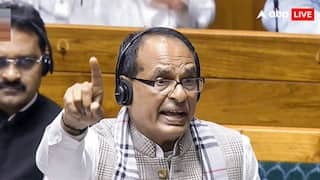How A Little Girl's Tooth, Found In A Laos Cave, Adds To Our Understanding Of Our Ancient Cousins
This is the first fossil evidence of Denisovans, cousins of modern humans and Neanderthals, in Southeast Asia. The tooth is most likely that of a girl, who lived between 1,64,000 to 1,31,000 years ago

New Delhi: An international team of researchers has discovered a wisdom tooth in Cobra Cave in Laos, and identified it as having belonged to a Denisovan child.
This is the first fossil evidence of Denisovans, cousins of modern humans and Neanderthals, in Southeast Asia. The tooth is most likely that of a girl, who lived between 1,64,000 to 1,31,000 years ago in the warm tropics of modern Laos. The finding supports clues in the DNA in modern indigenous populations that these ancient cousins of humans once roamed the region.
The findings of the study, led by researchers at the University of Copenhagen, were recently published in the journal Nature Communications.
Who Were Denisovans?
The Denisovans are an extinct hominin population, and are relatives of both modern humans and Neanderthals. Hominin is the group consisting of modern humans, extinct human species, and all our immediate ancestors, including members of the genera Homo, Australopithecus, Paranthropus, and Ardipithecus.
Scientists learnt about these ancient cousins of modern humans for the first time in 2008, when they discovered a single finger bone, or a phalanx in Denisova Cave in the Altai Mountains in southern Siberia. The finger bone belonged to a juvenile female who lived about 40,000 years ago, according to an article published in the journal Nature. Scientists extracted mitochondrial DNA from the finger bone, and identified a Denisovan individual for the first time.
A single mandible with a pair of intact molars, which most likely belonged to an adolescent, was unearthed high in a Tibetan cave known as the Xiahe Cave, and was eventually reported as Denisovan in 2019. The jawbone, which was discovered high on the Tibetan Plateau, and dated to more than 1,60,000 years ago, is also the first Denisovan species found outside the Siberian cave.
Due to the relative scarcity of bones, it has been hard to determine significant anatomical or behavioural characteristics of these archaic humans. Denisovan is the first fossil hominin identified as a new species based on its DNA alone.
Denisovans likely diverged from modern humans and Neanderthals around 300,000 to 400,000 years ago. The species became extinct about 30,000 years ago.
Both Siberia and Tibet are cold mountainous areas, and there was no fossil evidence that Denisovans could have been in Southeast Asia.
However, DNA evidence of Denisovans in Southeast Asia has been found. Some groups in the Philippines carry the same DNA as found in Denisovans. Traces of Denisovan DNA have also been identified in indigenous groups in other regions. But no physical evidence of Denisovans was found in this region.
Findings Of The Study
The team of researchers discovered the tooth in the Cobra Cave, also known as Tam Ngu Hao 2, during an excavation campaign in northern Laos in 2018. They tested the morphology of the tooth and determined that it belonged to a girl who was Denisovan, and lived in the middle Pleistocene era, which occurred 0.781 to 0.126 million years ago.
According to the study, modern Papuans, Aboriginal Australians, Melanesian, and Philippine Ayta groups retain a Denisovan genetic legacy. Melanesians are black island people in the south Pacific who migrated over thousands of years ago. Ayta is a collective term for several Filipino indigenous people who live in various parts of the island Luzon in the Philippines, and possess the highest level of Denisovan ancestry in the world.
The new cave is located near the famous Tam Pa Ling Cave where another important 70,000-year-old human (Homo sapiens) fossil was previously found.
Why The Discovery Is Important
The research team conducted a very detailed analysis, and found that the specimens from Laos and Tibet have morphological similarities, indicating that the molar from the Cobra Cave too belonged to a Denisovan.
This means that Denisovans indeed lived in Southeast Asia. The tooth from Cobra Cave provides direct evidence of a most likely Denisovan female individual in mainland Southeast Asia, the researchers noted in the study.
According to this study and previous ones, Denisovans interbred with ancestors of modern humans. Given the old age of the specimen and the tropical conditions under which the sediment and the fossils were deposited, no additional sampling for ancient DNA analyses were performed.
In a statement released by Southern Cross University, scientists from which was involved in the study, Fabrice Demeter, the lead author, said the cave sediments also contained teeth of giant herbivores, ancient elephants and rhinos that were known to live in woodland environments.
He explained that the fossil represents the first discovery of Denisovans in Southeast Asia and shows that Denisovans were in the south at least as far as Laos. He added that the discovery is in agreement with the genetic evidence found in modern-day Southeast Asian populations.
In the same release, Mike Morley, one of the co-authors of the study, said that the Cobra Cave was found containing remnants of an old cemented cave sediment packed with fossils.
Morley said the team has essentially found the 'smoking gun', because the Denisovan tooth shows these ancient cousins of humans were once present far south in the karst landscapes of Laos. Karst is a type of landscape where the dissolving of the bedrock has created sinkholes, sinking streams, caves, and springs, and is associated with soluble rock types such as limestone, marble, and gypsum.
Kira Westaway from Macquarie University in Australia, who co-authored the study, said it was important to establish a sedimentary context for the fossils' final resting place. If the sediments and fossils are found to be of a similar age, it indicates that the fossils were not buried long after the organism died. According to the study, the fossils were likely scattered on the landscape when they were washed into the cave during a flooding event that deposited the sediments and fossils.
The discovery suggests that Southeast Asia was a hotspot of diversity for the genus Homo with at least five different species from the late Middle to Late Pleistocene era: Homo erectus, Denisovans/Neanderthals, Homo floresiensis, Homo luzonensis, and Homo sapiens.







































